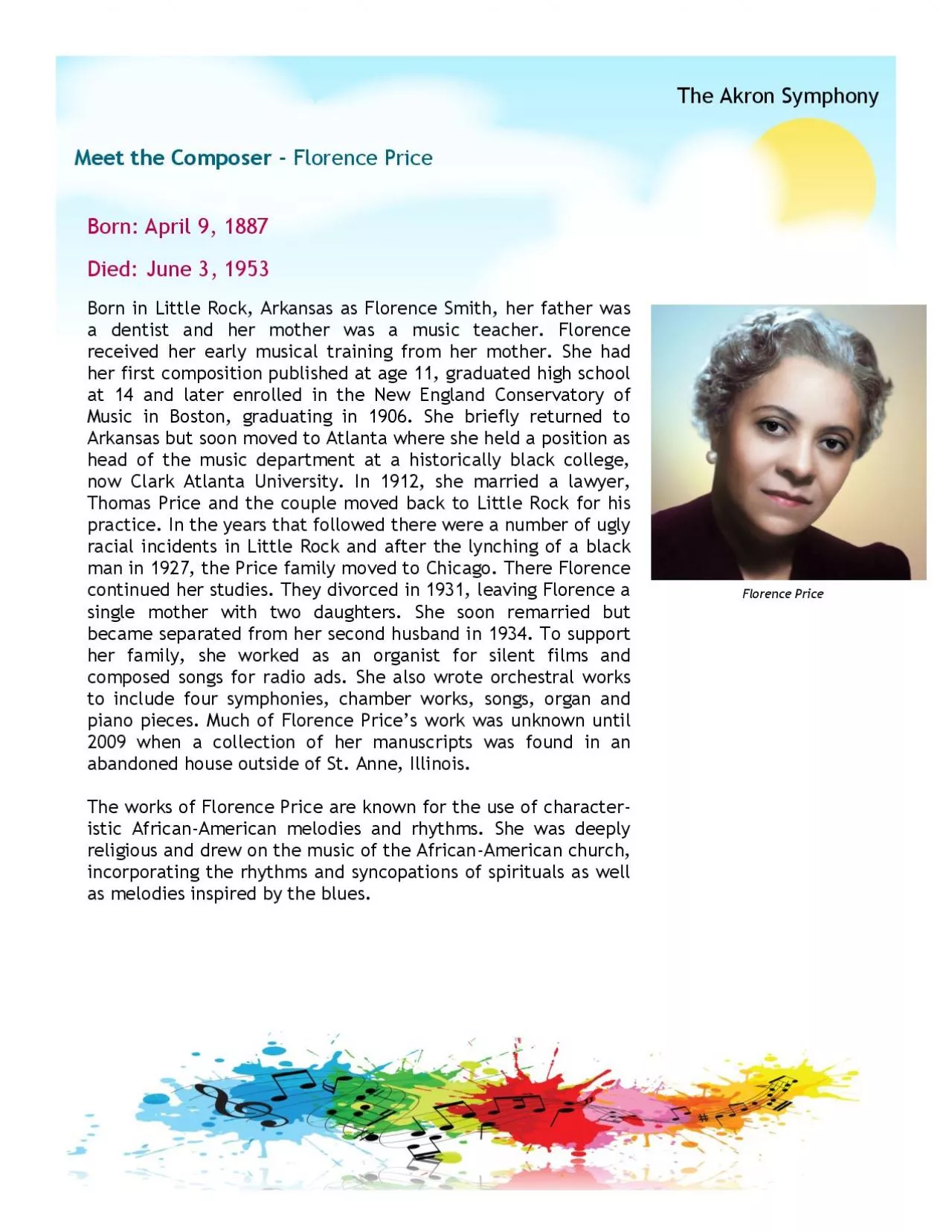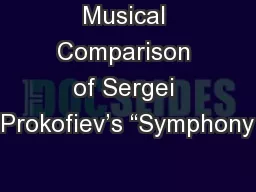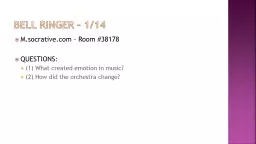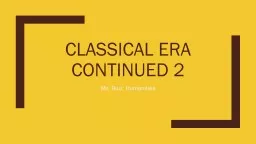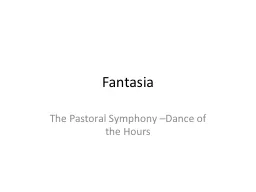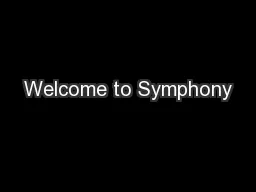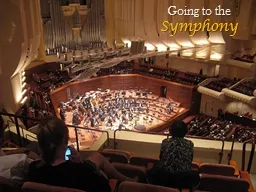PDF-The Akron Symphony
Author : adah | Published Date : 2021-08-07
Meet the Composer Florence PriceBorn April 9 1887Died June 3 1953Born in Little Rock Arkansas as Florence Smith her father was a dentist and her mother was a music
Presentation Embed Code
Download Presentation
Download Presentation The PPT/PDF document "The Akron Symphony" is the property of its rightful owner. Permission is granted to download and print the materials on this website for personal, non-commercial use only, and to display it on your personal computer provided you do not modify the materials and that you retain all copyright notices contained in the materials. By downloading content from our website, you accept the terms of this agreement.
The Akron Symphony: Transcript
Download Rules Of Document
"The Akron Symphony"The content belongs to its owner. You may download and print it for personal use, without modification, and keep all copyright notices. By downloading, you agree to these terms.
Related Documents

